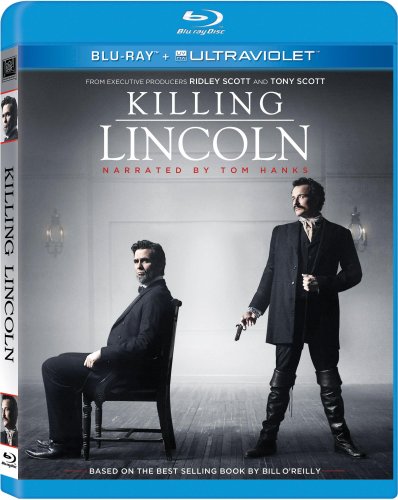

Killing Lincoln | reviewed by: William O'Donnell | September 15, 2013
| plot | acting | sound | visuals | entertainment value | |
|---|---|---|---|---|---|
| film |  |  |  |  |  |
| fidelity | dynamic range | dialogue | bass | soundstage | |
| audio |  |  |  |  |  |
| transfer | image depth | sharpness | color levels | contrast | |
| video |  |  |  |  |  |
| featurettes | commentaries | deleted scenes | documentaries | digital extras | |
| extras |  |  |  |  |  |
| verdict |  |
 |
 |
 |
 |

Visually a step up from most historical reanactment films. Some darker scenes are aged too much and get a little muddy looking.

| genre | Documentary | Drama |
|---|---|
| synopsis | April 14, 1865. One gunshot. One assassin hell-bent on killing a tyrant, as he charged the 16th President of the United States. And in one moment, our nation was forever changed. This is the most dramatic and resonant crime in American history: the true story of the killing of Abraham Lincoln. From Executive Producers Ridley Scott and Tony Scott, and narrated by Tom Hanks, National Geographic Channel's first ever docudrama, Killing Lincoln, based on the New York Times bestseller, combines re-creations with historical insight in a thrilling chronicle of the final days of President Lincoln and his assassin, John Wilkes Booth. |
| lead actors | Billy Campbell | Jesse Johnson | Geraldine Hughes | Kam Dabrowski | Tom Hanks | Brett Dalton |
| director | Adrian Moat |
















